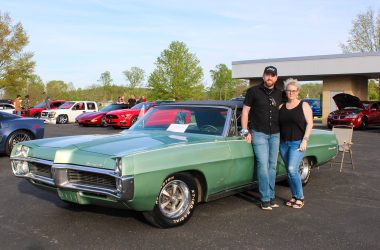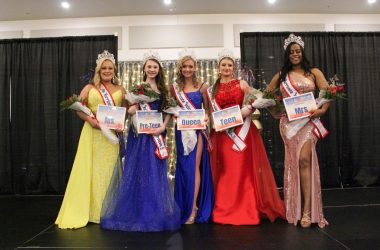Bob Arnold employs plastic gourds to provide housing for his martins in addition to the initial martin box which he put up in 1995.
The first wave of purple martins returned to Bob Arnold’s residence on North Harbour Lane in Hurricane last week. A second wave, composed of the 2023 hatch, are expected to arrive in the next few weeks.
The first purple martin sightings of 2024 in West Virginia are posted on the Purple Martin Conservatory Association website. There were four sightings of “scouts” in Putnam County on March 13 with Rachel Elswick of Buffalo, Danny Cantrell of Culloden, Tom Criner of Red House, and Cynthia Ellis of Red House, all submitting martin reports.
Purple martins return to the same nesting sites year after year unless driven away by starlings or sparrows which utilize the same nesting places. Bob has been able to maintain and increase the number of returnees by providing an abundance of ready-for-occupancy martin homes.
Martins have returned to his waiting homes for close to twenty years. Getting martins to return to an established colony is a lot less challenging than getting a colony started. Bob put up his first martin box, a condominium consisting of 12 apartments in 1995. After ten years with no tenants, he knew he had to try something different. Upon consulting with an area resident who annually welcomed between sixty and seventy returnees, he tried using bird’s nest gourd homes to attract the reluctant birds.
It worked! As he was preparing to raise the very first of the new homes which he had fashioned from his homegrown gourds, several martins arrived on the scene and attempted to make entry. Those first arrivals built nests and started families. These families have returned year after year. The martin pairs which have returned will set up house keeping on Harbour Lane and produce 4-6 offspring.
The incubation period lasts 15-16 days with the female serving as the main incubator with occasional help from the male. Hatching occurs over the course of two to three days. Fledging, when the young leave the nest, occurs between 26-32 days after hatch day. Fledglings will continue to receive care from both parents for up to a month after fledging. Come August, all adult martins will begin their trek to the Amazon rainforest for the winter. This year’s hatch will wait until September and October before heading to the Amazon for the very first time.
From now until the last martin leaves, the Arnolds will have the pleasure of watching their purple martins being purple martins.




